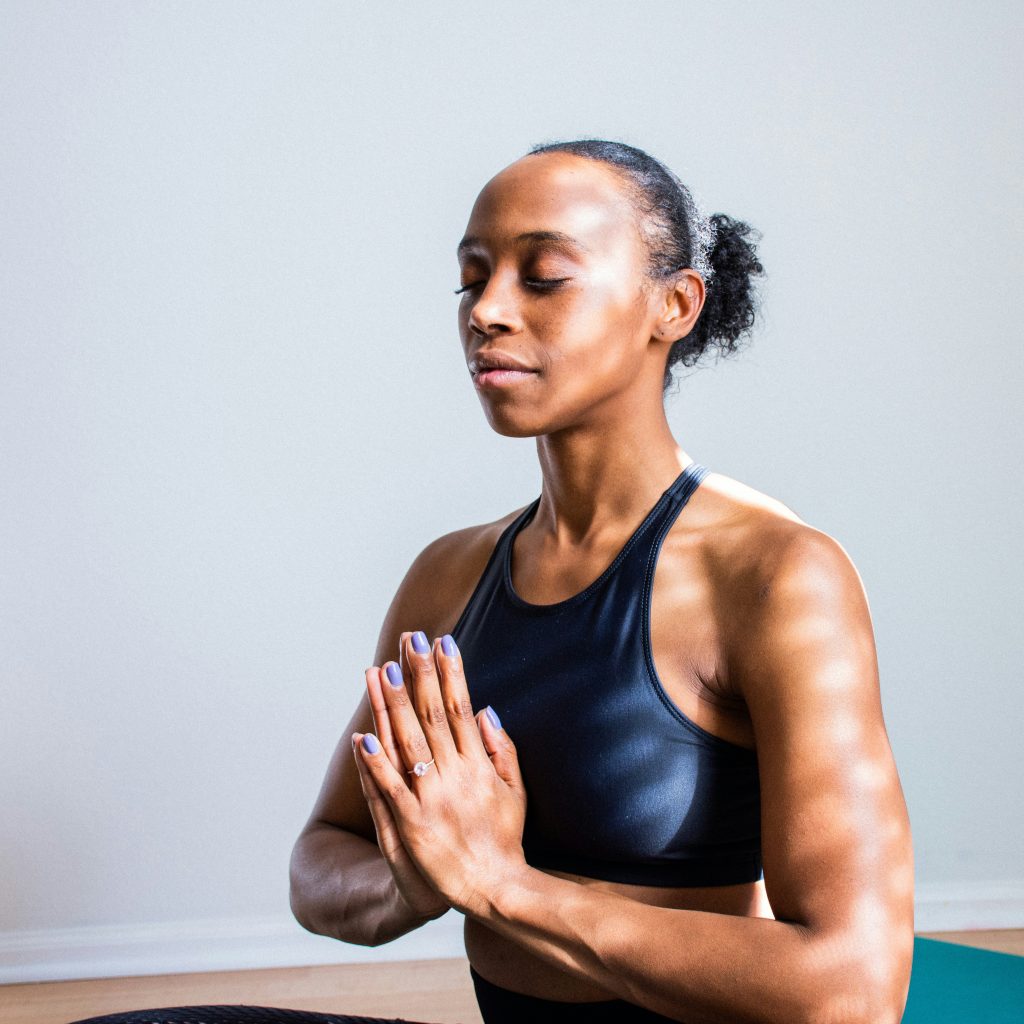Want to make sure you’re getting the most out of your workouts by activating your core correctly? Building six-pack abs and strengthening your core muscles is a goal for many, but it’s important to do it the right way. In this article, we’ll answer the question that’s on your mind: how can you ensure that you’re activating your core correctly during exercises? We’ll provide you with some helpful tips and guidance, so you can maximize your efforts and see the results you’re after.

Understanding the Core
What is the core?
The core refers to the group of muscles that make up the center of your body, including the muscles of your abdomen, back, pelvis, and hips. These muscles work together to provide stability and support for your spine and pelvis, allowing for proper posture, balance, and movement.
Why is core activation important during exercises?
Core activation is essential during exercises because it helps to stabilize your spine and pelvis, reducing the risk of injury and promoting optimal movement patterns. When your core muscles are engaged, they provide a solid foundation for the rest of your body to move efficiently and effectively. In addition, activating your core can help to improve your overall strength, power, and athletic performance.
Signs of Incorrect Core Activation
Lack of engagement
One of the main signs of incorrect core activation is a lack of engagement in the core muscles during exercises. If you notice that your core feels inactive or disconnected while performing exercises, it could indicate that you are not properly activating these muscles. This can lead to compensatory movements and increased risk of injury.
Excessive tension in other muscles
Another sign of incorrect core activation is the presence of excessive tension in other muscles, particularly in the neck, shoulders, and lower back. When your core is not properly activated, other muscles may try to compensate for the lack of stability by tensing up. This can lead to muscle imbalances and increased risk of strains or overuse injuries.
Poor form and posture
Incorrect core activation can also result in poor form and posture during exercises. If you find that you are often hunching forward, arching your back, or rounding your shoulders during exercises, it could be a sign that your core muscles are not properly engaged. Proper core activation helps to maintain a neutral spine and optimal posture, reducing the risk of injury and maximizing the effectiveness of your workout.
Correcting Common Core Activation Mistakes
Focus on breathing
One of the most effective ways to correct common core activation mistakes is to focus on your breathing. Proper breathing techniques can help to engage the deep core muscles, such as the transverse abdominis, which play a crucial role in core stability. Practice diaphragmatic breathing, where you inhale deeply through your nose, allowing your belly to expand, and exhale fully through your mouth, drawing your navel towards your spine. This can help to activate and strengthen your core muscles.
Proper alignment and posture
Another important element in correcting core activation mistakes is maintaining proper alignment and posture. When performing exercises, pay attention to your body alignment and ensure that your spine is in a neutral position. Avoid arching or rounding your back, and keep your shoulders down and relaxed. Engage your core by gently drawing your navel towards your spine and lifting your pelvic floor muscles.
Engaging deep core muscles
To correct core activation mistakes, it is essential to focus on engaging the deep core muscles rather than relying solely on superficial muscles like the rectus abdominis (six-pack muscles). The deep core muscles, such as the transverse abdominis and multifidus, provide stability to your spine and pelvis. Practice exercises that target these muscles, such as pelvic tilts, transverse abdominal activations, and the plank exercise. Gradually increase the difficulty of these exercises as you strengthen your deep core muscles.
Exercises for Core Activation
Planks
Planks are a fantastic exercise for activating your core. Start by positioning yourself in a push-up position, with your forearms resting on the ground and your body in a straight line from head to toe. Hold this position for as long as you can, focusing on engaging your core muscles and maintaining proper form and alignment. As you get stronger, you can challenge yourself by extending the duration or adding variations, such as side planks or plank jacks.
Deadbugs
Deadbugs are a great exercise for activating your core while also challenging your coordination and stability. Begin by lying on your back with your arms extended towards the ceiling and your knees bent at a 90-degree angle. Slowly lower one arm overhead and the opposite leg towards the floor, maintaining a stable core and avoiding any arching of your back. Return to the starting position and repeat on the other side. Focus on keeping your core engaged throughout the movement.
Bird Dogs
Bird dogs target not only your core but also your back and glute muscles. Start on your hands and knees, with your hands directly below your shoulders and your knees below your hips. Extend one arm forward while simultaneously extending the opposite leg behind you. Keep your core engaged and your spine in a neutral position. Return to the starting position and repeat on the other side. Continue alternating sides while maintaining proper form and core activation.
Curl-Ups
Curl-ups, also known as abdominal crunches, are a classic exercise for strengthening your core. Lie on your back with your knees bent and your feet flat on the ground. Place your hands behind your head, with your elbows wide. Engage your core and lift your head, neck, and shoulders off the ground, curling towards your knees. Lower back down with control and repeat for the desired number of repetitions. Focus on maintaining proper form and avoiding any strain in your neck or lower back.
Russian Twists
Russian twists are an excellent exercise for engaging your core muscles, particularly the obliques. Sit on the ground with your knees bent and your feet flat on the floor. Lean back slightly, keeping your back straight and your core engaged. Hold a weight or a medicine ball with both hands, and rotate your torso from side to side, touching the weight or ball to the floor on each side. Keep your core activated throughout the movement and maintain a controlled pace.

Tips for Activating the Core
Start with gentle activation exercises
If you are new to core activation exercises, it’s important to start with gentle exercises that allow you to focus on proper form and engagement. Begin with exercises like pelvic tilts, heel slides, and bird dogs. These exercises target the deep core muscles and help to establish a mind-muscle connection. As you become more comfortable and your core strength improves, you can gradually increase the intensity and difficulty of your exercises.
Engage the core throughout the workout
To effectively activate your core, it’s crucial to engage these muscles throughout your entire workout, not just during isolated core exercises. Maintain proper posture and alignment in all exercises, whether it’s squatting, lunging, or lifting weights. Focus on drawing your navel towards your spine and bracing your core to create stability and support.
Avoid overexertion
While it’s important to challenge yourself during workouts, it’s equally important to avoid overexertion, especially when it comes to core activation exercises. Pushing yourself too hard or rushing through exercises can lead to poor form and compromised core activation. Listen to your body and work within your limits. Gradually increase the intensity and duration of your exercises as your core strength improves.
Gradually increase intensity
To continue progressing and improving your core activation, it’s essential to gradually increase the intensity of your exercises. This can be done by adding resistance, increasing the duration or number of repetitions, or trying more advanced variations of the exercises. Gradual progression allows your core muscles to adapt and become stronger without excessive strain or risk of injury.
Importance of Proper Form
Maintaining neutral spine
Maintaining a neutral spine is crucial for proper core activation and overall biomechanics. Whether you’re performing core-specific exercises or compound movements, such as squats or deadlifts, it’s important to keep your spine in a neutral position. This means avoiding excessive arching or rounding of the back, which can place undue stress on your spine and compromise core activation. Engage your core to stabilize your spine and maintain proper alignment throughout your workouts.
Monitoring hip and shoulder positioning
In addition to maintaining a neutral spine, it’s important to monitor the positioning of your hips and shoulders during exercises. For optimal core activation, your hips should be in line with your spine and not tilted forward or backward. Similarly, your shoulders should be relaxed and not hunched or rounded. Paying attention to these details helps to ensure that your core is properly engaged and that you’re performing exercises with proper form and alignment.
Avoiding compensatory movements
Poor core activation can lead to compensatory movements and muscle imbalances, putting you at a greater risk of injury. Watch out for common compensations such as excessive arching of the lower back, lifting the shoulders towards the ears, or using momentum instead of controlled movements. By focusing on proper form and engaging your core, you can avoid these compensatory movements and maximize the effectiveness of your exercises.

Using Visual and Verbal Cues
Seek guidance from a professional
If you’re unsure about proper core activation or need personalized guidance, it can be helpful to seek guidance from a fitness professional or a certified personal trainer. They can assess your form, provide feedback, and offer exercises specific to your needs and goals. A professional can also provide visual and verbal cues to help you understand and improve your core activation techniques.
Utilize mirrors for visual feedback
Using mirrors during your workouts can provide valuable visual feedback on your form and core activation. Position yourself in front of a mirror or use reflective surfaces to observe your body alignment and posture. Pay attention to your spine, shoulders, and hips, ensuring they are in proper alignment. Visual feedback can help you make real-time adjustments and maintain proper form throughout your exercises.
Focus on cues like ‘draw navel to spine’
Verbal cues can be extremely helpful in reminding yourself to engage your core during exercises. Phrases like “draw your navel to your spine” or “brace your core” can serve as reminders to activate the deep core muscles and maintain stability. Incorporate these cues into your workout routine and focus on them during each exercise. Over time, these verbal cues can become second nature, enhancing your core activation and overall performance.
Incorporating Core Training into Your Routine
Dedicate specific core workout days
To prioritize core activation and strength, consider dedicating specific days in your training routine exclusively to core exercises. This allows you to focus solely on improving core activation and targeting these muscles. You can follow a structured core workout plan or attend core-focused fitness classes. By dedicating specific days to core training, you ensure that your core muscles receive the attention and focus they deserve.
Include core exercises in warm-ups and cool-downs
Another way to incorporate core training into your routine is by including core exercises in your warm-ups and cool-downs. Begin each workout with a short warm-up routine that includes exercises like plank variations, bird dogs, or glute bridges to activate your core and prepare it for the upcoming workout. Similarly, finish each workout with a cool-down routine that includes core-specific stretches to improve flexibility and engage your core in a different way.
Integrate core activation into compound exercises
To make the most of your workouts, integrate core activation into compound exercises. Many compound movements, such as squats, lunges, and overhead presses, require core strength and stability. Focus on engaging your core throughout these exercises, maintaining proper posture and alignment. By integrating core activation into compound exercises, you not only save time but also ensure that your core muscles are working synergistically with the rest of your body.

The Role of Progression
Start with basic exercises
When it comes to core activation, it’s important to start with basic exercises that allow you to establish a strong foundation. Begin with exercises that target the deep core muscles, such as pelvic tilts, transverse abdominal activations, and plank variations. These exercises help you develop the mind-muscle connection and strengthen the deep core muscles, which are essential for proper core activation. Mastering the basics sets the stage for progression and more challenging exercises.
Gradually increase difficulty and resistance
As your core strength improves, gradually increase the difficulty and resistance of your exercises. This can be done by adding instability, such as using a stability ball or a BOSU ball, or by incorporating resistance bands or weights. Progressively challenging your core muscles promotes continual growth and adaptation. However, ensure that you maintain proper form and core activation as you increase the difficulty to avoid compromising your safety and effectiveness.
Monitor form and functionality
Throughout your core activation journey, it’s crucial to continuously monitor your form and functionality. Pay attention to your body’s response to exercises, ensuring that your core activation is translating into improved stability, balance, and functionality in your everyday movements. Regularly assess your progress, and if necessary, make adjustments to your training program to address any areas that need improvement. Stay mindful of proper form and maintain focus on the intended benefits of core activation.
Benefits of Proper Core Activation
Improved stability and balance
Proper core activation leads to improved stability and balance, as the core muscles provide a solid foundation for all movements. By strengthening and engaging these muscles, you enhance your ability to maintain balance during exercise and daily activities, reducing the risk of falls or other balance-related injuries. Improved stability and balance also contribute to better posture and overall movement quality.
Reduced risk of injury
Correctly activating your core during exercises helps to reduce the risk of injury, particularly in the lower back and pelvis. The core muscles provide stability and support to the spine, preventing excessive stress and strain on the surrounding structures. When your core is properly engaged, it acts as a natural brace, protecting your spine and reducing the likelihood of injuries such as sprains, strains, or herniated discs.
Enhanced athletic performance
Proper core activation plays a vital role in enhancing athletic performance. Whether you’re an avid runner, a weightlifter, or a weekend warrior, having a strong and activated core improves your ability to generate power, transfer forces efficiently, and maintain proper form. Strong core muscles contribute to improved technique, speed, and overall performance in various sports and physical activities.
In conclusion, understanding and correctly activating your core during exercises is crucial for optimal performance and injury prevention. By focusing on proper form, engaging the deep core muscles, and gradually increasing the difficulty of your exercises, you can unlock the numerous benefits of a strong and activated core. Remember to listen to your body, seek professional guidance if needed, and consistently prioritize core activation in your fitness routine.






